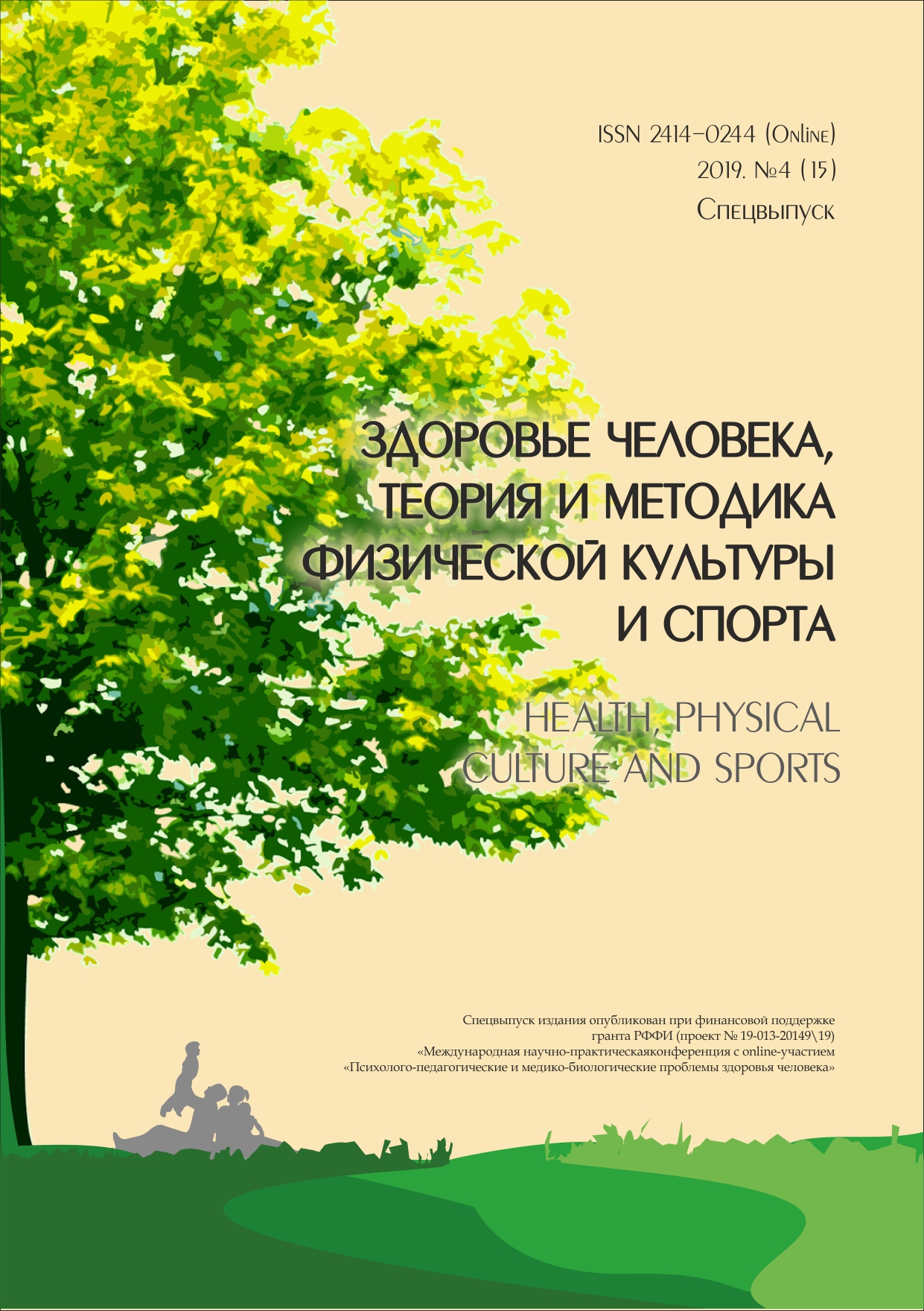THE INFLUENCE OF NORDIC WALKING IN THE WOODS ON THE PSYCHO-EMOTIONAL STATE OF STUDENTS OF THE FIRST AND THIRD YEAR OF ASMU
Abstract
This article presents a study on the relationship between Nordic walking in the forestand a change in the psycho-emotional state of first and third year students of Altai State MedicalUniversity. As an argument of relevance, the conclusion of a study by scientists from the KarolinskaInstitute in Sweden is given. The purpose of our study: to study the influence of Nordic walking in theforest on the psychoemotional background of first and third year students at ASMU. To analyze thestate of the psychoemotional background of the students, the eight-color Lusher test (in the Sobchikmodification) was used.A psychophysiological study was conducted in September 2019. 100 students took part in the survey,the average age was 19.0 ± 0.5 years, with no restrictions on the health group. Having received the dataafter the completion of the lesson, we noted serious changes in the ratio of psychoemotional statusesamong students. In the first positions of choice, first-year students increased by 22 % the number of redcards characterizing optimism and cheerfulness, and the choice of cards of brown, black and purplecolors, which are responsible for dissatisfaction, aggressiveness, tension decreased by 20 %.Third-year students also noted an increase in optimism and cheerfulness from (10 %) to (30 %), adecrease in the percentage of fatigue, indifference by 26 % and emotional instability, tension by 20 %. It can be seen from the results that the proportion of subjects with a positive and cheerfulpsycho-emotional status significantly increased precisely due to people with emotional instability,tension, dissatisfaction, resentment and aggression. It is possible that this was caused by non-criticalphysical activity, which contributed to the production of endorphins, which increased the emotionalbackground and caused “runner euphoria”, and since walking was carried out in the forest, thepsychotherapeutic effect of the forest can also be taken into account.The differences in the psycho-emotional background of students of different courses can beexplained by some adaptation to the psycho-emotional stress of third-year students, and theemotional instability of first-year students by a change in the format of instruction and the dynamicstereotype as a whole.Based on the findings of the study, we proposed effective practical application of the informationreceived.The study will be continued in the aspect of studying the influence of Nordic walking on the psychoemotionalbackground of first and third year students at the ASMU in autumn-spring dynamics. Wealso plan to expand the range of psychophysiological methods and develop recommendations forcorrecting the regime, time, and intensity of classes, taking into account all the features of trainingat the ASMU at different courses.
Downloads
References
Собчик Л. Н. Модификация цветового теста Люшера. М.: Питер, 2013. 123 с.
Обуховский К. Психология влечений человека. М., 2006. С. 201.
Гете И. В. Учение о цвете. 1810. С. 16.
Базыма Б. А. Цвет и психика: монография. Харьков, 2001. С. 169.
Фрилинг Г., Ауэр К. Человек, цвет, пространство. М., 1973. 316 с.
Эткинд А. М. Цветовой тест отношений // Общая психодиагностика. М., 1987. С. 221–227.
Линдберг А. Марафон здоровья. Скандинавская ходьба и джоггинг. От первых шагов до спортивной трассы. М.: Вектор, 2015. 256 c.
Полетаева А., Шельмина Л., Балашов Н. Лечебная физкультура. Скандинавская ходьба. Секреты известного тренера (комплект из 2 книг). М.: Питер, 2015. 304 c.
Горелов А. В., Румба О. Г., Кондаков В. А. Анализ показателей здоровья студентов основной медицинской группы // Вестник Балтийского федерального университета им. И. Канта. 2008. Вып. 6. С. 28–39.
Базыма Б. А. Использования скандинавской ходьбы в комплексе средств физического воспитания студентов: монография. Харьков, 2001. С. 169.
An author should not normally publish manuscripts describing essentially the same research in multiple journals or publication venues. Such redundant publication is generally considered to constitute unethical publishing behavior, and if discovered may result in a manuscript under consideration being rejected, or a published article being retracted.
Authors of manuscripts reporting on original research should present an accurate account of the work performed, accompanied by an objective discussion of its significance. Underlying data should be represented accurately in the manuscript. The manuscript should contain sufficient detail and references to permit others to replicate the work. The fabrication of results and the making of fraudulent or knowingly inaccurate statements constitute unethical behavior and may be cause for rejection or retraction of a manuscript or published article.





